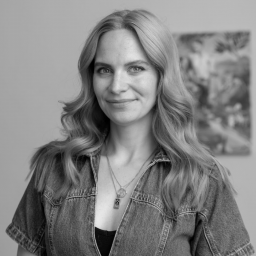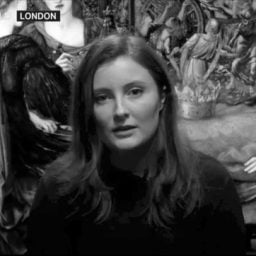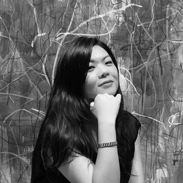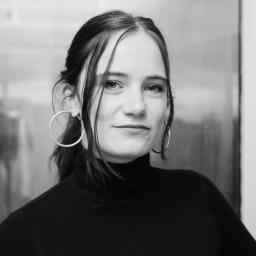Art & Exhibitions
6 Standout London Gallery Shows to See During Frieze Week
Anna Weyant makes her U.K. debut at Gagosian while Sudhir Patwardhan gets dual outings at Vadehra Gallery and the Barbican Centre.
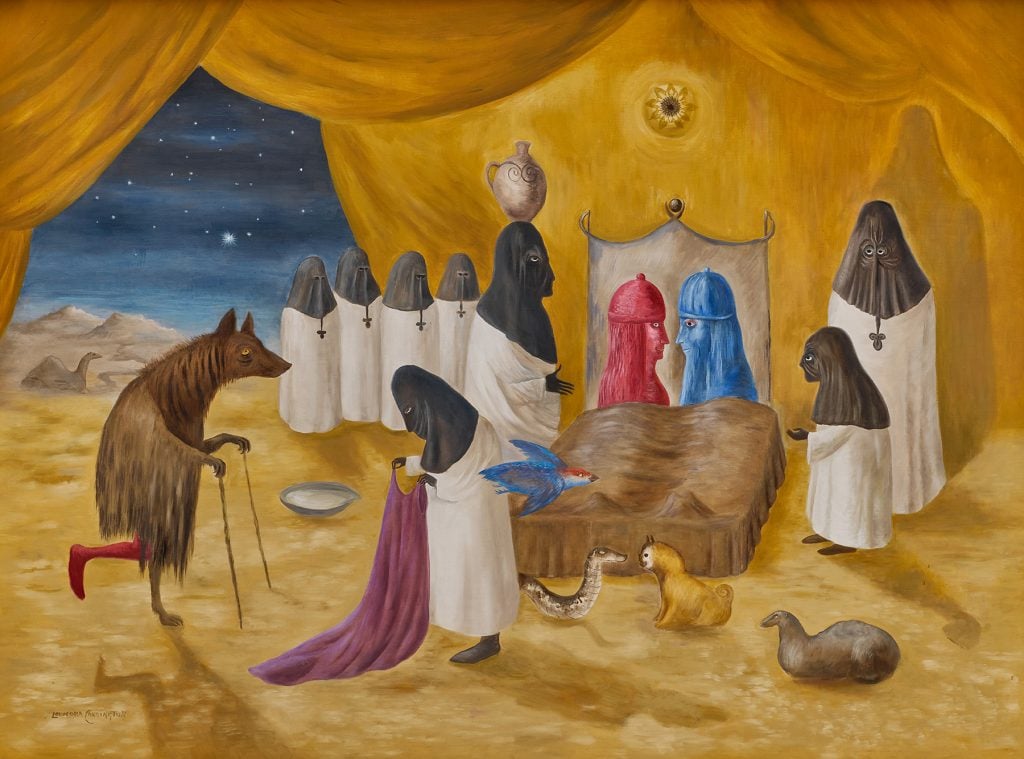
London is brimming with brand-new gallery shows, all freshly mounted, as Frieze Week gets underway. Here are six that we think are unmissable, from Alison Wilding’s “sexy” abstract sculptures to the occultist paintings of Leonora Carrington and Linder.
“Jordan Wolfson: Mirror and Bear” at Sadie Coles HQ
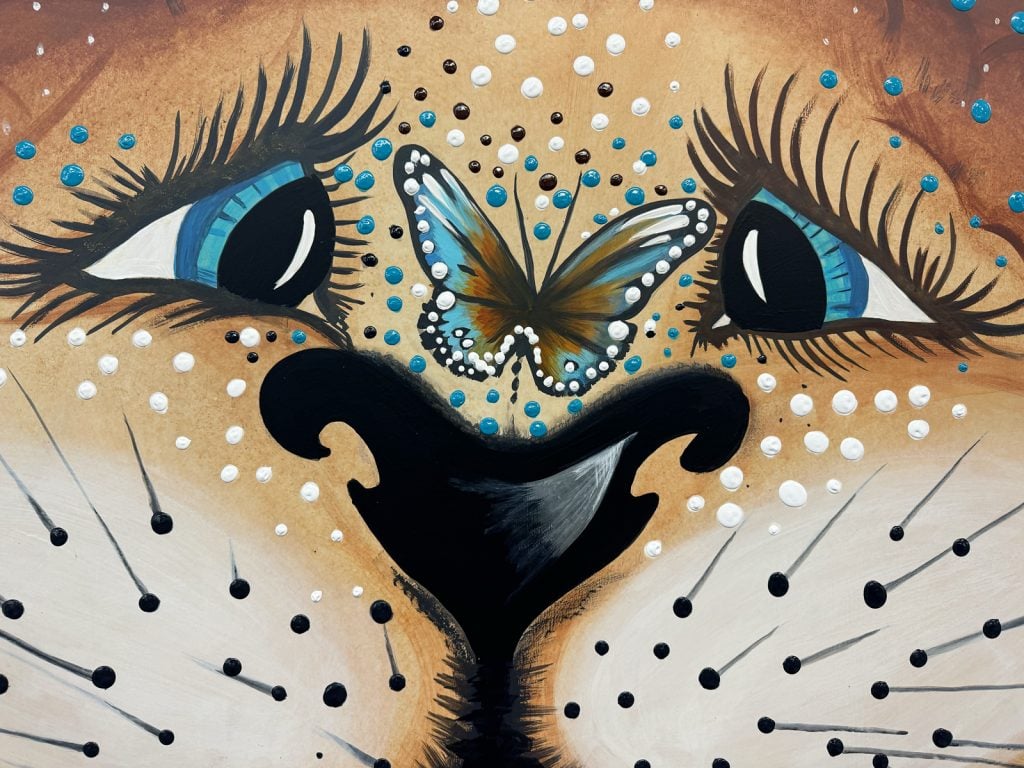
Jordan Wolfson, detail of Mirror and Bear (2024). © Jordan Wolfson. Courtesy the Artist and Sadie Coles HQ, London.
Since his first inclusion in the Whitney Biennial in 2006, few artists are able to polarize audiences quite as acidically as Jordan Wolfson. While the “shock” aspect of shock value is generally fleeting, the 44-year-old artist has been able to alchemize that feeling into something that has lasted nearly two decades. At Sadie Coles HQ, a new sculptural animation by the artist behind the infamously animated Female Figure will occupy the gallery in his show called “Mirror and Bear,” on view through November 7.
According to the gallery’s text, the piece will “blend the childlike with the obscene.” This dichotomy is at the heart of many famous works by Wolfson, who often co-opts the visual aesthetic of children’s animation to give his animatronic sculptures a sense of depravity, and an implied loss-of-innocence arc. As the world’s conversation about virtual reality’s place in society continues, this new work by Wolfson challenges the definition of what we consider real or virtual. Surely, Wolfson’s perspective will either give us guidance (or perhaps confuse us even further.)
—Annie Armstrong
“Sudhir Patwardhan: Cities: Built, Broken” at Vadehra Art Gallery, No. 9 Cork Street
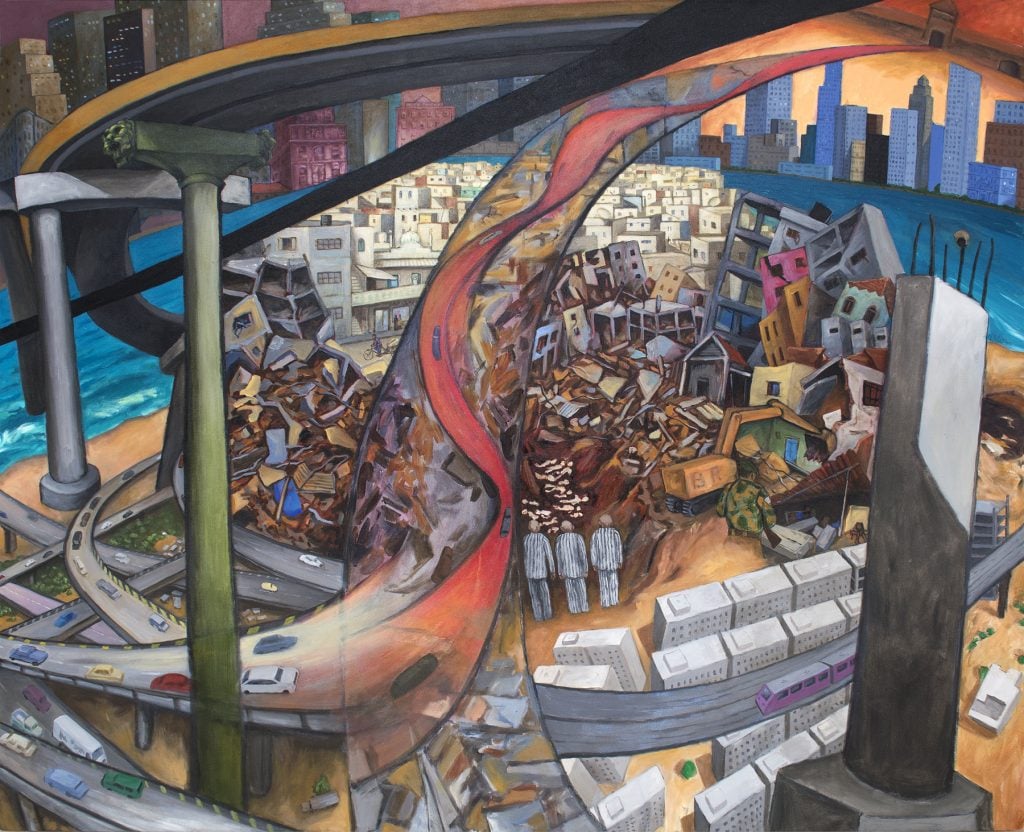
Sudhir Patwardhan, Built and Broken (2024), Courtesy the artist and Vadehra Art Gallery.
“Cities: Built, Broken” is Indian artist Sudhir Patwardhan’s London solo debut, presented by the New Delhi-based Vadehra Art Gallery at the Frieze-backed project space No. 9 Cork Street through October 19. Born in 1949 in Pune, Maharashtra, the self-taught artist took up painting in the 1970s, when he moved to Thane, near Mumbai, to study medicine. He worked as a radiologist for three decades until 2005, when he decided to become a full-time artist.
Patwardhan captures the human lives, social fabric, and urban landscape of the city on his canvases, in a style resonating with that of Cézanne and Picasso. This exhibition at Cork Street highlights a recent body of work, which continues to demonstrate Patwardhan’s insightful and emotive depiction of his homeland’s transformation. Concurrently, his works are also on view at the Barbican Centre’s “The Imaginary Institution of India: Art 1975–1998,” a critically acclaimed landmark group show of more than 30 Indian artists whose works reflect the dramatic sociopolitical changes the country went through during these decades.
—Vivienne Chow
“Alison Wilding: Testing the Objects of Affection” at Alison Jacques
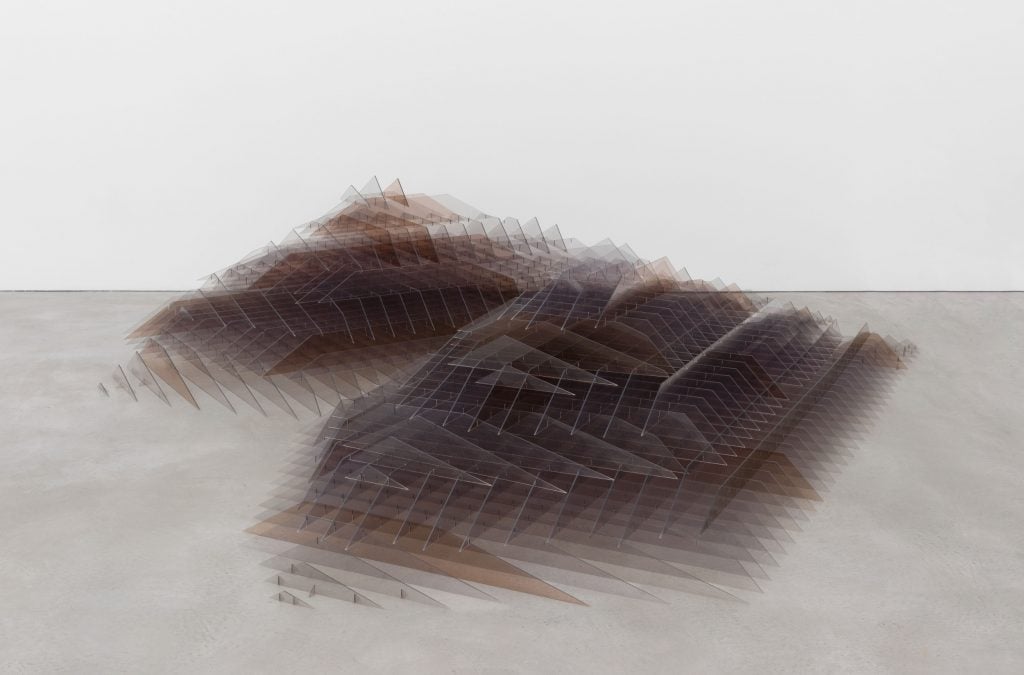
Alison Wildling, Terrestrial (2003). Photo: Michael Brzezinski, courtesy of Alison Jacques, London, © Alison Wilding.
One of Britain’s foremost contemporary sculptors, Alison Wilding has spent the past five decades producing what she calls “abstract sculptures” using inventive techniques and all manner of materials, from PVC, rubber, and copper to foam, wax, and string. Though non-representational, her work is ultimately about the body and human desire. Wilding burst onto the London scene in the 1980s alongside peers like Richard Deacon and Anish Kapoor, their work lumped together under the generalist term of “new British sculpture,” which skewed mostly male in scope. While she’s been shortlisted for the Turner Prize twice and was made an OBE in 2019, Wilding has still remained somewhat under the radar.
The impressive range of her 50-year practice is what stands out in a new retrospective, the British artist’s first show at Alison Jacques since she joined the gallery earlier this year. Some pieces dangle, while others are affixed to the wall or declare themselves in the center of the room. In any case, our experience of them shifts as we navigate the room. What is implied by certain unexpected material combinations? “Sculpture can be sexy,” Wilding once said; the rest is left up to the imagination. The exhibition runs through October 26.
—Jo Lawson-Tancred
“Anna Weyant: Who’s Afraid of the Big Bad Wolves?” at Gagosian
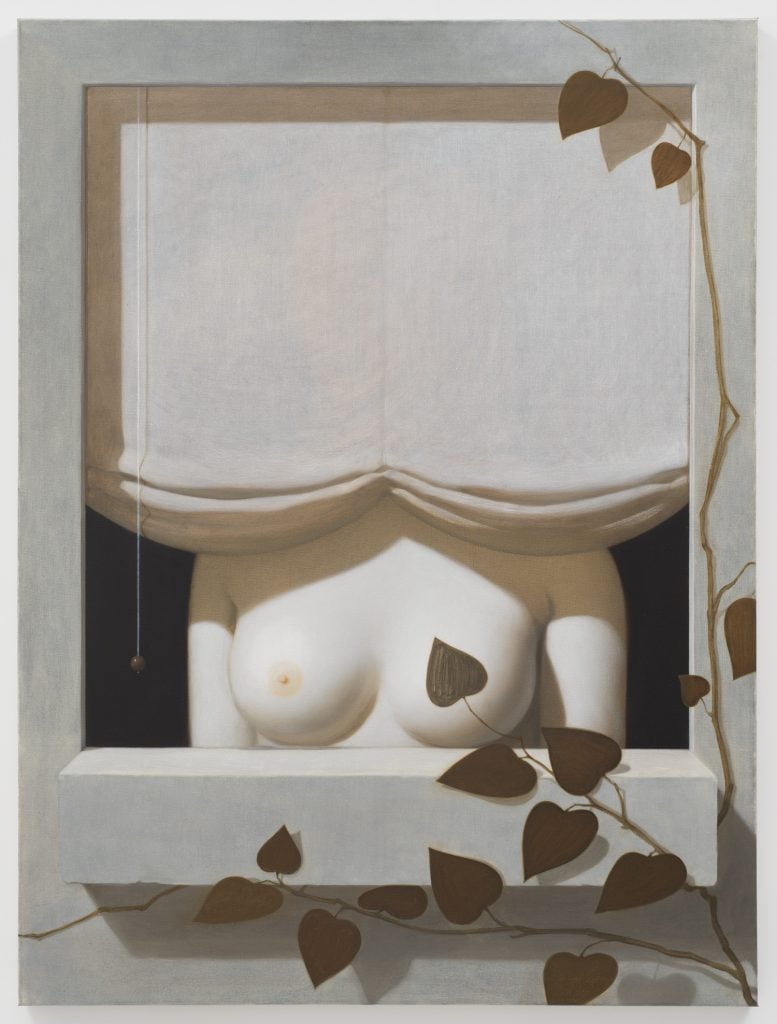
Anna Weyant, Girl in Window (2024). © Anna Weyant. Photo: Maris Hutchinson.
It has been a relatively calm year for Anna Weyant. The once red-hot market for ultra-contemporary art, including her works, has cooled off, as has her much-talked-about relationship with mega gallerist Larry Gagosian, which Artnet’s Wet Paint revealed in January. Perhaps with all these distractions now in the rear view mirror, now is the time to take another look at the art of the 1995-born Canadian painter.
Weyant remains part of Gagosian’s stable, and her latest works will be on display during Frieze week in “Who’s Afraid of the Big Bad Wolves?,” the artist’s first London exhibition, running through December 20 at the gallery’s Davies Street location. The show will feature six paintings, all created this year. While the artist continues to demonstrate impeccable and incisive technique through these meticulously rendered figurative paintings, these new works possess an added layer of mystery that draws viewers in, serving as portals to Weyant’s inner world rather than mirroring public perception.
—Vivienne Chow
“Enchanted Alchemies: Magic, Mysticism, and the Occult in Art” at Lévy Gorvy Dayan
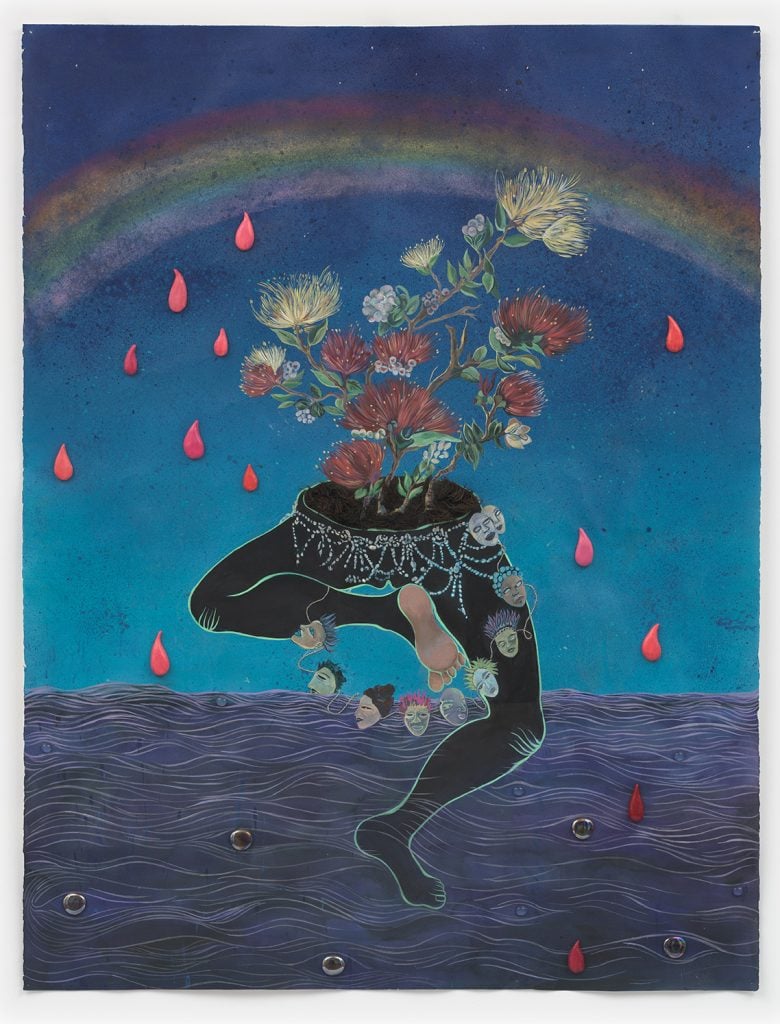
Chitra Ganesh, Breathing Water and Air (2024). Courtesy of Lévy Gorvy Dayan.
This wide-ranging and energetic show features 50 works by more than two dozen artists exploring how magic, the occult, and mysticism have influenced artists ranging from 20th-century Surrealists like Leonora Carrington, Gertrude Abercrombie, and Ithell Colquhoun to contemporary makers like Linder, Chitra Ganesh and Claire Lehmann, who have created brand-new works for the exhibition. Organized into three thematic sections—Occultism; Dreams, Magic and Mysticism; and Enchantment and Transformations—the show explores how artists of the last century have employed ancient practices to shift cultural narratives in the present.
It’s a timely show, not least because it coincides with the centenary of André Breton’s “Surrealist Manifesto” as well as a major survey at the Centre Pompidou in Paris dedicated to the global reach of the movement. It also crucially presents magic not as an esoteric practice, but as part of the intrinsic fabric of reality, just in time for the veil between the material and spiritual world to thin on the most mysterious night of the year, Halloween. The show runs, fittingly, through the winter solstice on December 21.
—Margaret Carrigan
“Olu Ogunnaike: Is the Soil Right” at Rose Easton
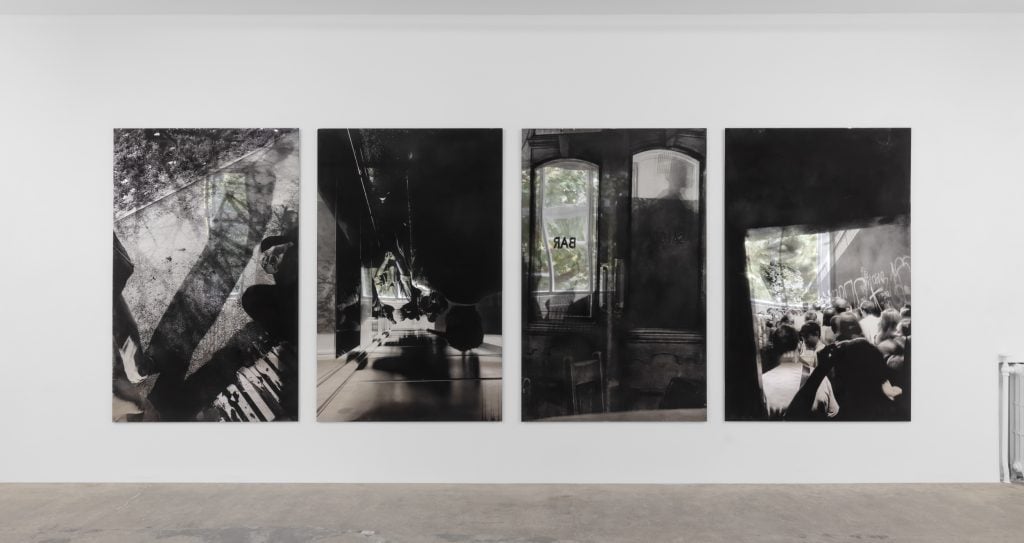
Olu Ogunnaike’s exhibition “Is the soil right?” installed at Rose Easton gallery. Photo: Jack Elliot Edwards.
A new series of charcoal dust prints on monumental slabs of mirrored steel by Olu Ogunnaike offer snapshots of street life, whether a solitary figure lingering outside a pub entrance or crowds gathering on a side street. Sometimes upside down or partially obscured, their vantage point that may initially disorientate the viewer, but their layered complexity reveals itself fully with time. Viewers can also catch themselves in the reflective surface, their own image merging into the artist’s hazy personal memories.
Born and raised in London, Ogunnaike’s profile has been on the rise in recent years an has become known for his works that use industrial and organic materials to query how we relate to the built environment. His 2020 Cell Project Space commission saw him parquet the gallery’s floor with lumber from plane trees, which were planted around London during the industrial revolution and are increasingly removed to make way for building works in rapidly gentrifying areas. Earlier this yer, “Fix Your Face,” a site-specific work at Bristol’s Spike Island, used wood, mud, charcoal and steel from the nearby Underfall Yard, a historic boatyard, to address the city’s colonial maritime past. His show at Rose Easton, through October 26, is his first solo exhibition with the gallery.
—Jo Lawson-Tancred

